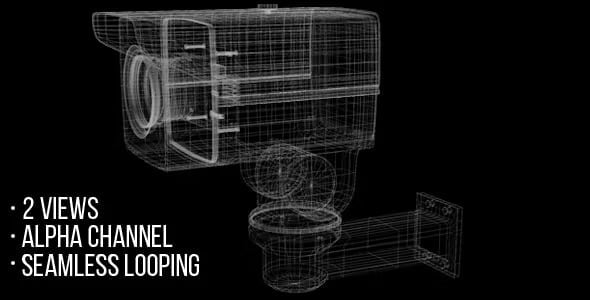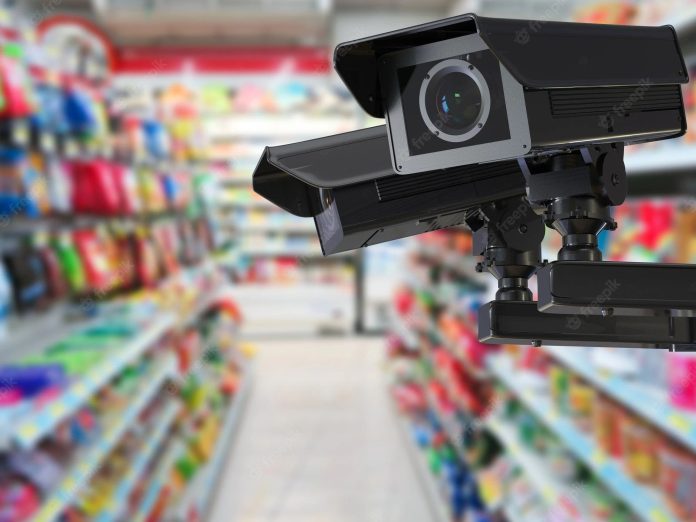The Holy Grail For Access And Video Surveillance – 3D CCTV
“The ‘holy grail’ in surveillance 3D CCTV is a totally automated system where low-cost sensors can monitor and entire facility such as an airport or factory, and can make decisions locally and then only report ‘true positives’ to response personnel,” said Spare.
“Unfortunately, this far exceeds the state of the art. Today’s low-cost sensors, such as 2-D video cameras have to be backstopped with complicated computer setups, software, and other types of often-expensive sensors to work around the technical limitations, making it impractical to deploy an economical system with significant coverage area.”

The fundamental problem, said Spare, is that computers are “lousy” at breaking down a scene coming from a conventional video camera or two into its component objects, and then classifying these objects into useful categories such as animate or inanimate, human or animal, large or small, nearby or distant. “Even with so-called ‘intelligent video’ approaches, the constraints are profound and often severely limiting,” he stated.
The consequence, said Spare, is that positive identification of any threat or anomaly — and the dismissal of non-threats — depends, ultimately, on human intervention — guards watching banks of monitors, personnel sent to investigate, and so forth.
The problem with this 3D CCTV workaround, Spare ventured, is that its effectiveness is widely unpredictable. Subsequent losses, security lapses, or false alarms have a high cost, both to the end user, and to the companies supplying security personnel and equipment. Increasing effectiveness, by reducing unpredictability, can similarly cause security costs to skyrocket.
The unpredictability comes from the human component, Spare asserted. “Regardless of how well trained, how well intended, or how well deployed security personnel are, the systems are at odd with our DNA. We are programmed, from birth, to ignore stimuli that become increasingly familiar — smells, sounds, background activities, repetitive events, etc.”
In security, Spare said, such “increasingly-familiar” stimuli include false or nuisance alarms, or banks of identical monitors where nothing is ever happening. “The nuisance alarms are particularly problematic,” said Spare. “When they first occur, they distract personnel from other areas of interest where something important may be about to happen. And, if they continue with any frequency, the brain — and the personnel attached to it — rapidly loses interest. By contrast, automated systems never lose interest. In fact, everything looks interesting, to a fault.”
The goal is for every alarm to be a true threat, and every true threat to generate an alarm, said Spare. “Take the case of perimeter security. Low cost motion detectors will raise an alarm with a squirrel as well as a human. Let’s say that alarm activates a video camera and alerts a guard to look at it. If there is a lot of squirrel activity that night, the guards will inevitably lose interest. So, you try to improve the system. You add image processing software.
But at night, under infrared, a squirrel poised 2 feet from the camera looks like an intruder at 10 feet. That doesn’t work. So you bury a wire at great expense that can tell you the mass of something that crosses its field. But that reacts equally to humans as to deer, and doesn’t localize the threat. And on, and on. The costs and complexity spiral upwards. And it’s fundamentally because computers don’t ‘see’ in three dimensions.”
3D CCTV Imaging
“True” 3-dimensional imaging — where the camera reports not only the colour and brightness of each “pixel” of the scene, but also the exact distance to that element — is the needed solution, maintained Spare. “Imagine an object moving into a scene that fills the frame from top to bottom, but is relatively narrow.
If your image sensor additionally tells you that the object is 12 inches away, is capped with a 2-inch wide, egg-shaped structure, and is 9 inches tall, you know you have a squirrel — and an alarm is not generated. By contrast, if the sensor reports that the object is moving, 10 feet away, is 6 feet tall, and is capped by a spherical appendage 7 inches across, you’ve got an intruder. Being able to calculate the distances to every point — which yields size and shape as well as distance — is the critical — and missing — capability.”
Spare said that once you had available 3-dimensional imaging using low-cost, chip-based sensors, additional applications in security, such as structure-based — rather than pattern-based — facial recognition, cargo monitoring, warehouse monitoring, and others would suddenly be appealing to security equipment vendors and end users — both in terms of functionality, and in terms of cost.
Particularly interesting, said Spare, would be applications that combined several low-cost technologies, such as 3D CCTV sensor imaging and RFID. “Using RFID tags in employee badges and 3D CCTV sensors in a warehouse, your security system could track all movement in the warehouse — something that RFID could not do alone — and for intruders — discriminate between human and animal, and then raise an alarm.”








